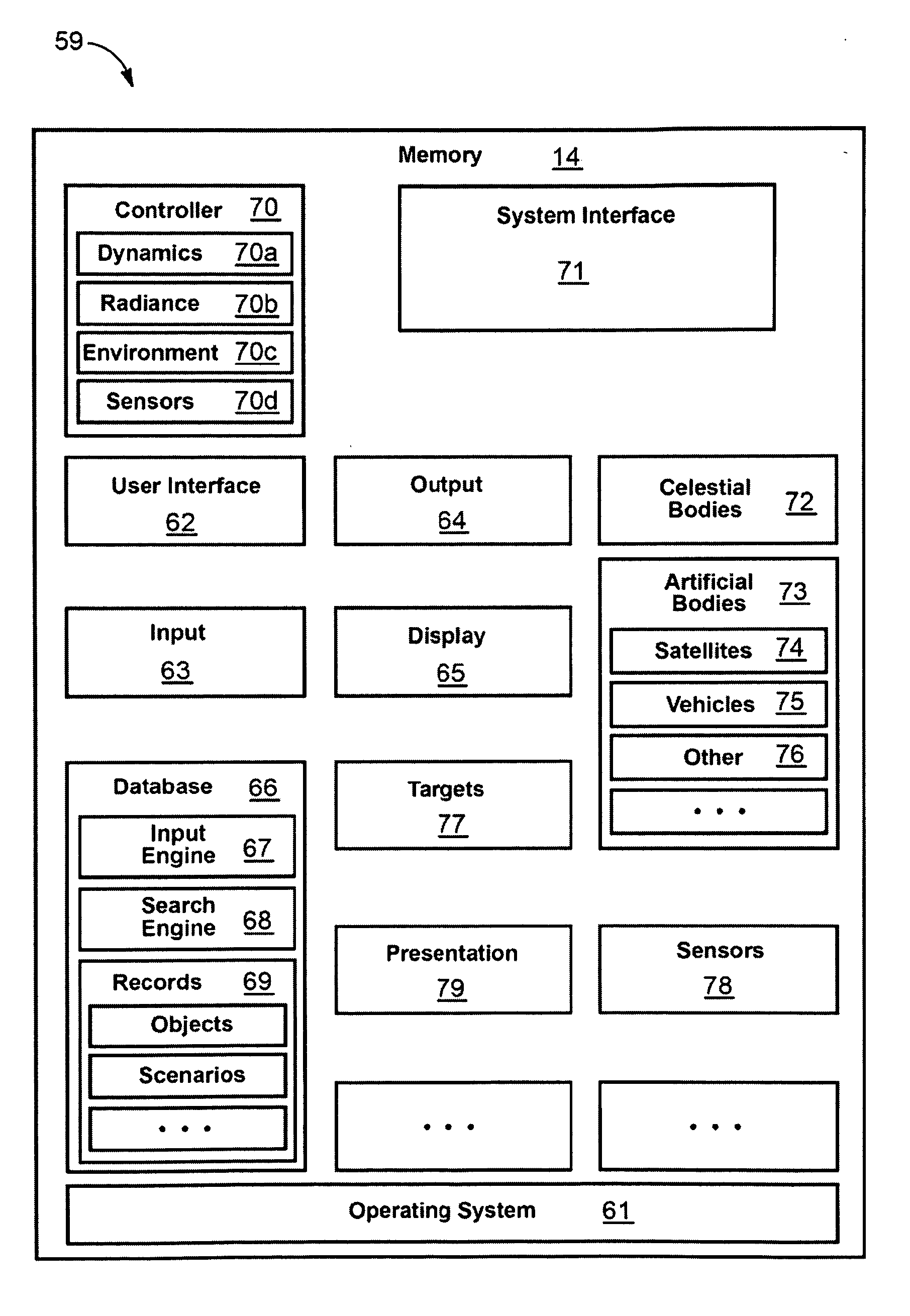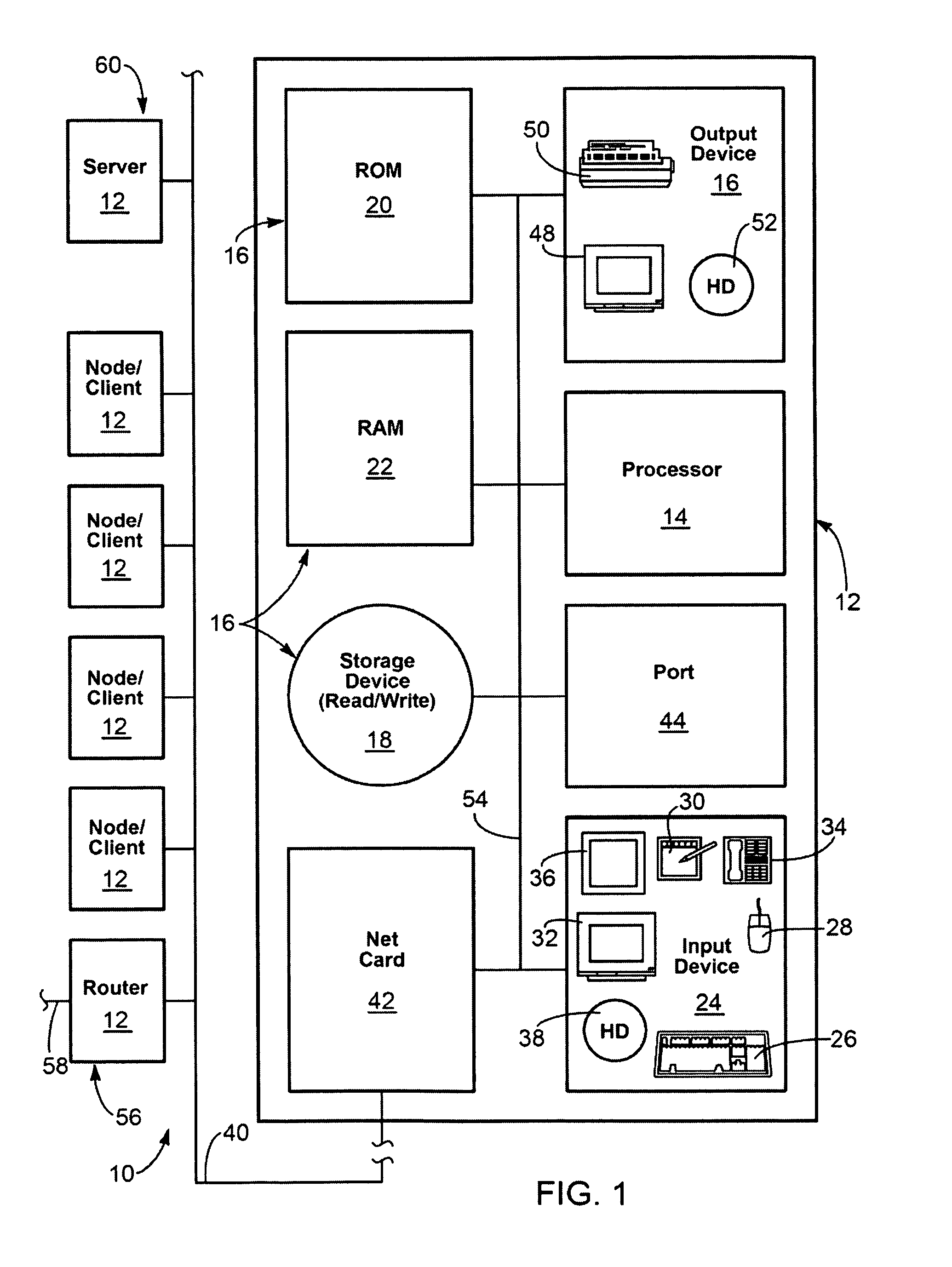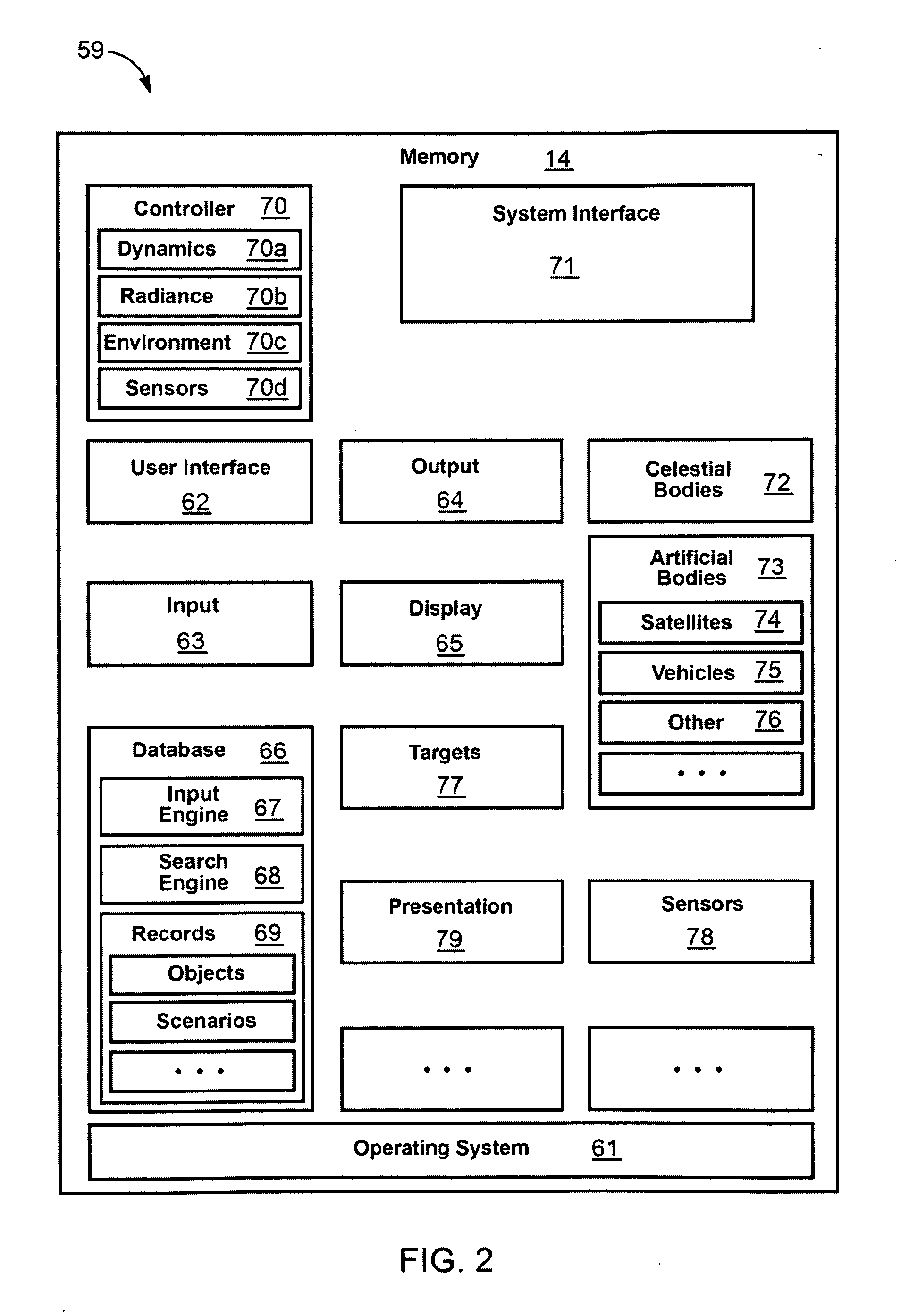Integrated, Predictive, Radiance Sensor Apparatus and Method
- Summary
- Abstract
- Description
- Claims
- Application Information
AI Technical Summary
Benefits of technology
Problems solved by technology
Method used
Image
Examples
example i
[0175]In selected embodiments, a user interface module (e.g., GUI) provides to a user or operator control to direct the simulation by setting simulation states and parametric values and to observe the results of the simulation. Time may be a primary parameter of the simulation. Simulation results may be computed at a specific time value. Internal to the simulation, time may be maintained relative to a specific time base (e.g., J2000 time).
[0176]A control module may sequence the execution of a single simulation “time frame” (at the current value of time) in a deterministic order based on the selected objects in the universe of simulation and physical causality. The control module may also manage the progression of time from one simulation frame to the next. Time may either increment by a specified step parameter (e.g., 0.1 second) or decrement by the specified step from one simulation time frame to the next. A new simulation time frame may then be computed at this new time. Time may ...
example ii
[0177]Spatial coordinates of all objects in the simulated universe may be maintained relative to a specific spatial coordinate base (e.g., such as Earth Centered Ecliptic with units of kilometers). The universe being simulated may contain representations of the objects being simulated, both natural and artificial (i.e., manmade). The operator may select via the interface module from an enumeration of objects to be included for purposes of the simulation.
[0178]Natural objects may include, but are not limited to, any body whose location and motion can be described mathematically and many are preprogrammed already, such as the sun, planets, moons, asteroids, comets, zodiacal light, stars, Milky Way galaxy, and the like. Man-made objects may include, but are not limited to, artificial satellites, missiles, ground vehicles, airborne vehicles, marine vehicles, aircraft, and the like. Satellites may be specified to be orbiting a particular parent body. Missiles may be in powered flight rel...
example iii
[0184]With respect to temperature, an object may compute the temperature of its surface elements at the given time. The temperatures may be a function of surface characteristics of the object, internal heat sources in the object (e.g., electronic equipment or motors), environmental heat loading (e.g., sunlight impinging on the object), and the like. Spectral radiance may be the multi-valued data element fundamental to calculating radiative transfer and electro-magnetic sensor performance. It may include the electro-magnetic power density per unit of spectral interval across some range of the electro-magnetic spectrum (e.g., number of watts per square centimeter per steradian in every 0.1 micrometer interval from 0.3 to 28.0 micrometers).
PUM
 Login to View More
Login to View More Abstract
Description
Claims
Application Information
 Login to View More
Login to View More - R&D
- Intellectual Property
- Life Sciences
- Materials
- Tech Scout
- Unparalleled Data Quality
- Higher Quality Content
- 60% Fewer Hallucinations
Browse by: Latest US Patents, China's latest patents, Technical Efficacy Thesaurus, Application Domain, Technology Topic, Popular Technical Reports.
© 2025 PatSnap. All rights reserved.Legal|Privacy policy|Modern Slavery Act Transparency Statement|Sitemap|About US| Contact US: help@patsnap.com



